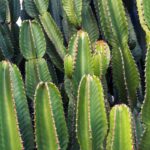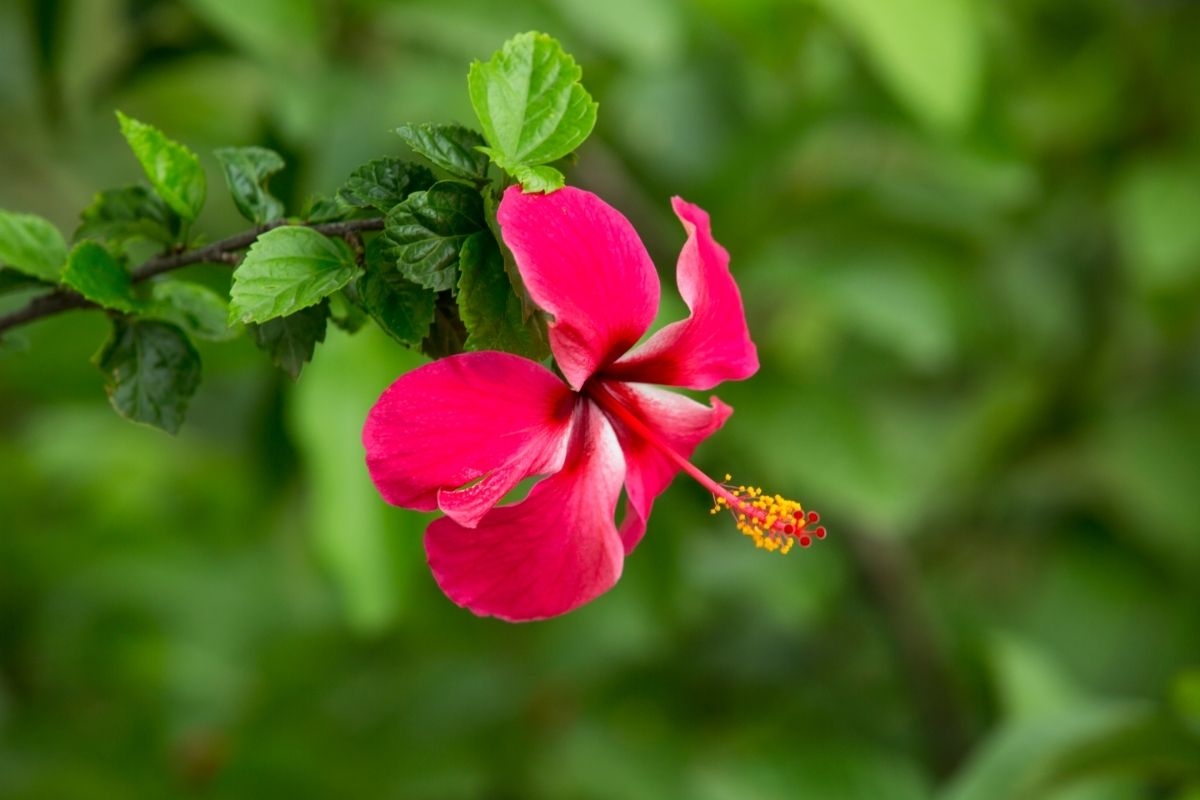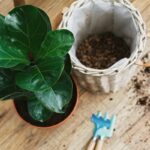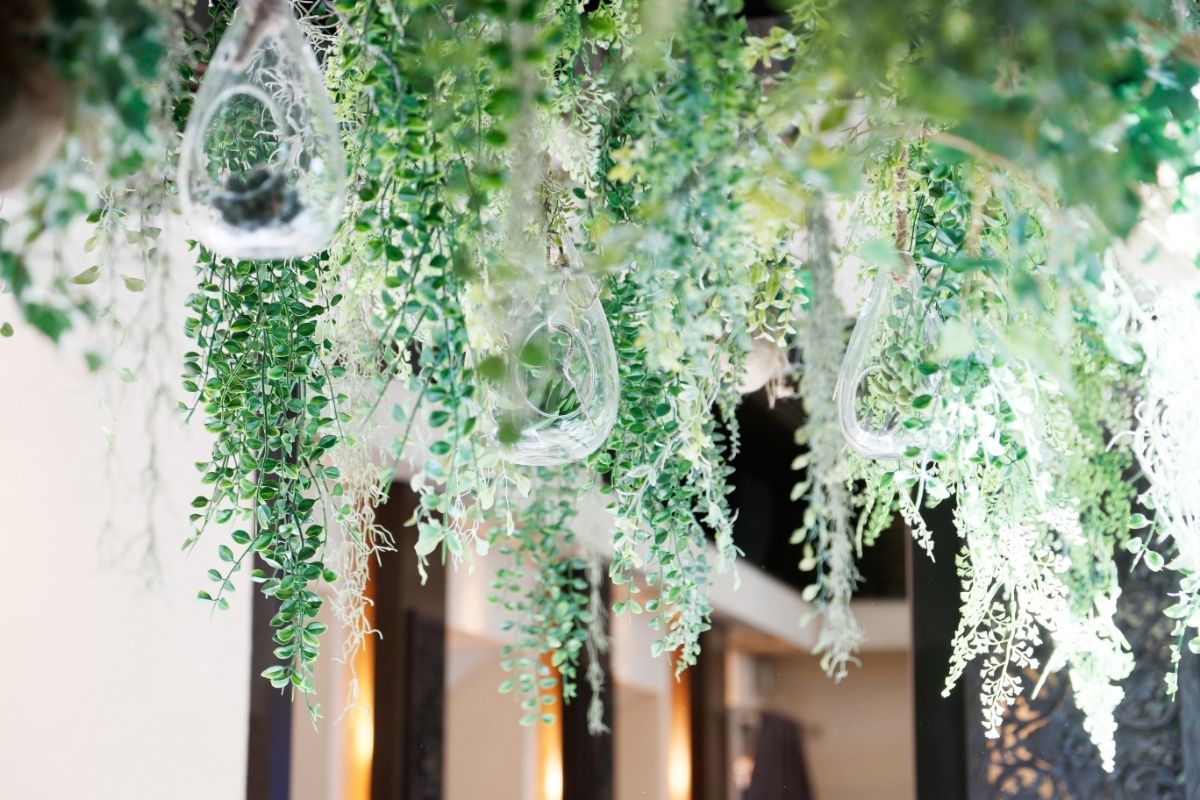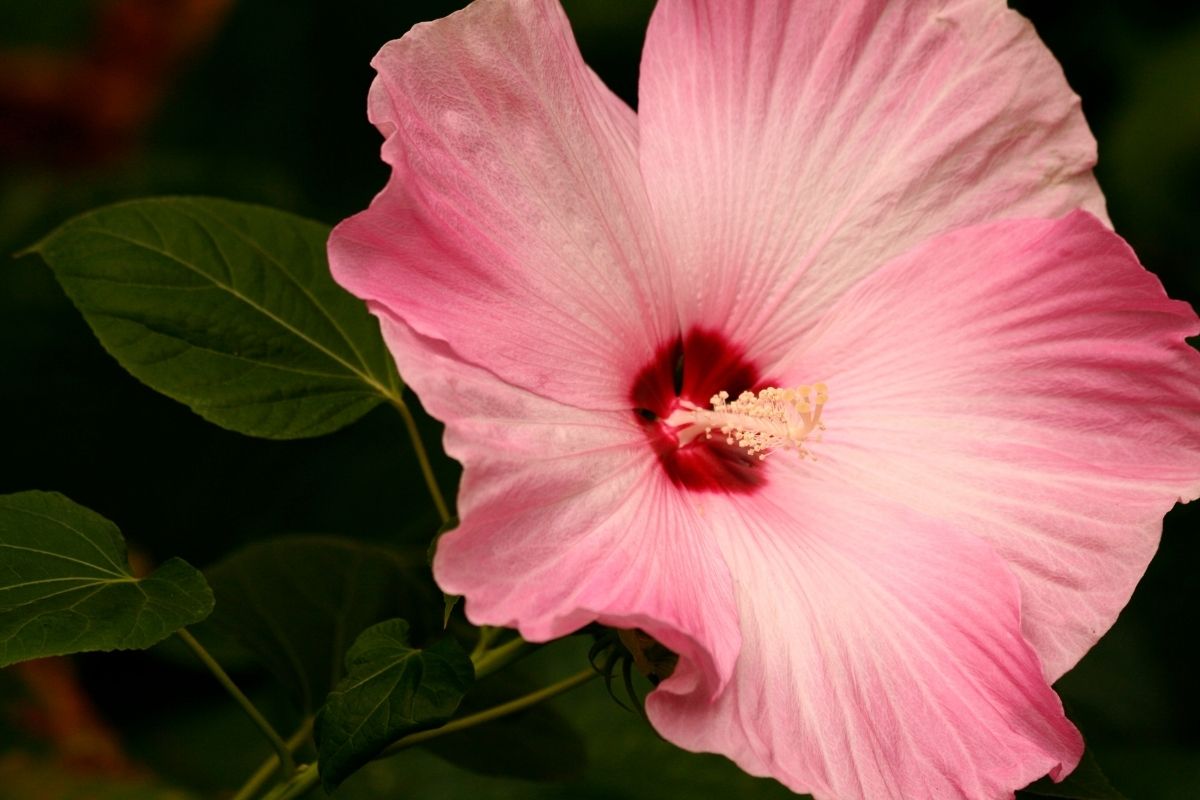If you live in a warm climate, you have an abundance of beautiful plants and flowers that are great for the afternoon sun. These include things like Bougainvilleas, daylilies, catnip, and lots more!
There are also lots of great perennial border plants which flourish in the afternoon sun, including Hardy Geraniums!

In this article, we will explore some of the best plants for the afternoon sun. Read on for some tips and tricks for the best plants to grow in a spot with afternoon sun. Let’s dive in!
Bougainvilleas
When you are choosing the best plant for your spot with afternoon sun, Bougainvilleas are a great choice! Bougainvilleas grow best in very sunny and dry spots.
They will need a bit of water every morning and evening.
These plants will need high-phosphate fertilizer, and they will need to be fertilized every few months. You should make sure that you don’t overwater this plant, as this can stop the plant from blooming.
These plants can grow as tall as 30 feet, and it is important to choose a protected fence. They will grow well in most types of soil, and they can be pruned often if they are getting too big.
This plant does have thorns, so you should be careful of this. They can also attract mealybugs which can cause damage to your plant.
In the winter months, you should cover your Bougainvillea plants to prevent any damage.
Certain varieties of these plants are more hardy when it comes to colder temperatures, so you should choose these varieties if you live in an area with a cold winter.
Shasta Daisies
Shasta daisies are a perfect choice for gardens with lots of afternoon sun. It is a large, classic flower with beautiful white flower heads.
They also have a yellow center, and the flowers will grow to be around 3 or 4 feet in size. Shasta daisies grow best in full sunlight, but they can survive in partial shade.
Shasta daisies are best suited for soil with a high concentration of organic matter. This soil is well drained.
The Shasta daisy attracts birds, bees, and butterflies, as well as ladybugs and other insects. This brings a lot to your garden.
The beautiful flowers bring some color to your garden in the summer months, and they also make very good cut flowers.
These flowers look great on their own, but they are also beautiful among other summer-blooming perennials.
These flowers can be grown in groups, or as individual plants. They come in a few different varieties, with the most popular being the ‘Alaska’ or ‘Becky’ varieties.
When you are planting these flowers, ensure that you are planting them in rich compost. This will encourage the daisy to grow very well. This flower is hardy, but it does not grow well if it is not kept well watered.
Coneflowers
Coneflowers are great plants for a spot that captures the afternoon sun. This is a perennial plant that is native to North America.
There are three different species of coneflower, and each of them produces flowers with narrow petals, long tap roots, and rhizomes. These plants grow easily throughout the US, but they are best in fairly dry climates.
This plant produces flowers that attract pollinators, making it a great addition to your garden. The blooms are perfect, and they make beautiful cut flowers.
If you want to encourage coneflowers to bloom, you can prune the plant when the flowers have finished blooming.
These blooms are also great at attracting wildlife, and they support self-seeding. They will need to be planted after the final frost, to ensure that they bloom well.
You can start growing these seeds indoors around 4 weeks before the last frost if you want to get a headstart.
Most coneflowers bloom over and over again, so you must deadhead the flowers. Coneflowers will not bloom if they don’t have a sunny spot.
Zinnias
Zinnias bloom well when they are in full sun. They also require good air circulation. Although you don’t need supplemental watering, these plants prefer well-drained soil.
Zinnias are usually planted as soon as the final frost has passed. The seeds should be sown about a quarter of an inch into the soil, and they will take a few days to sprout.
You can purchase Zinnias seedlings from any local garden center, or you can grow them from seeds. If you opt to grow these plants from seed, you will need to start growing them indoors.
These plants will need a few hours of full sun every day to thrive. They need bright, sunny locations with good ventilation.
Alyssum
This is a perennial that blooms with small white flowers. They are very fragrant, so they are a great addition to any garden. These flowers grow best in areas of full sun with well-drained soil and average water.
These plants will flourish if they have 6 hours of full sun. The small flowers on the plant attract insects that pollinate the garden.
This is one of the easiest plants to grow in your garden. It can tolerate a range of different temperatures and it is a hardy plant. This plant prefers moist soil, but it can tolerate some shady areas.
Daylilies
Daylilies are beautiful plants, and they are very unique! The flowers on this plant only last one day, but the flower produces hundreds of blooms over this period. They will continue to bloom for at least 4 weeks.
Daylilies grow in moist soils, and they are very low maintenance. They prefer moist weather, but they can tolerate drought. These plants are perfect for sunny borders and they will brighten up any garden.
These plants also make a good ground cover on slopes. This is because they have very dense roots which hold the soil together.
There are thousands of different daylilies to choose from in a range of different colors, so you will be able to choose a color that fits in with your other flowers. The flowers attract ladybirds and hoverflies.
Daylilies also have great beautiful cut flowers, so you can bring them indoors, too!
Catmint
Catmint is a very attractive plant that has either white or purple flowers. It is very easy to grow, making it a great plant to have.
This plant has a beautiful aroma that is attractive to cats, who you will often find munching on this plant!
Many cat toys are stuffed with dried catmint, and the cats will also often roll around in the plants.
This plant originates from the Northern Hemisphere, and there are lots of different species of plant out there.
Catmint is also very attractive to bees and other insects, which is great for your garden! If you are hoping to attract pollinating insects to your garden, it is great to have catmint!
Sedum
Sedum is a great plant to have in the garden, and they are great because they tolerate drought very easily.
Sedums are succulents that have flowerheads that are rich in nectar. They are loved by bees and lots of other pollinators, so they are a great addition to the garden.
These flowers bloom with flat, bright pink flowerheads. They appear on upright stems and they grow many flowers. They also produce green foliage which is very beautiful on its own.
You do not need to deadhead these flowers, as they can stay on the plants. They also make great cut flowers, allowing you to bring the outdoors in.
Other Things To Consider
It is important to remember that light is just one of many different things that you need to consider when you are choosing your plants.
The other things include moisture availability, soil type, winter hardiness, and lots more!
When growing plants, you should look at all aspects of the growing area. Plants are easy to move, so if you have chosen the spot but don’t think that it is right for the plant, you can always opt to move it later on.
If you live in an area that gets a lot of rainfall, you will need to ensure that you have well-draining soil. If you do not get much rainfall, you will need to stay on top of watering your plants!
Some plants on this list can survive drought, but some will need to be well watered as much as twice a day!
Final Thoughts
So, there you have it! If you’ve got a great spot in the garden with lots of afternoon sun then you’ve come to the right place.
After reading this article, you should have all the information you need on the perfect plants for this environment.
Remember to look at the other aspects of your garden to ensure that these plants can grow well. Take into account the soil type and rainfall, too!
- Best Hanging Plant For Low Light - September 4, 2023
- Best Indoor Plants Florida - August 28, 2023
- Best Plants For Bathroom Smells - August 21, 2023



